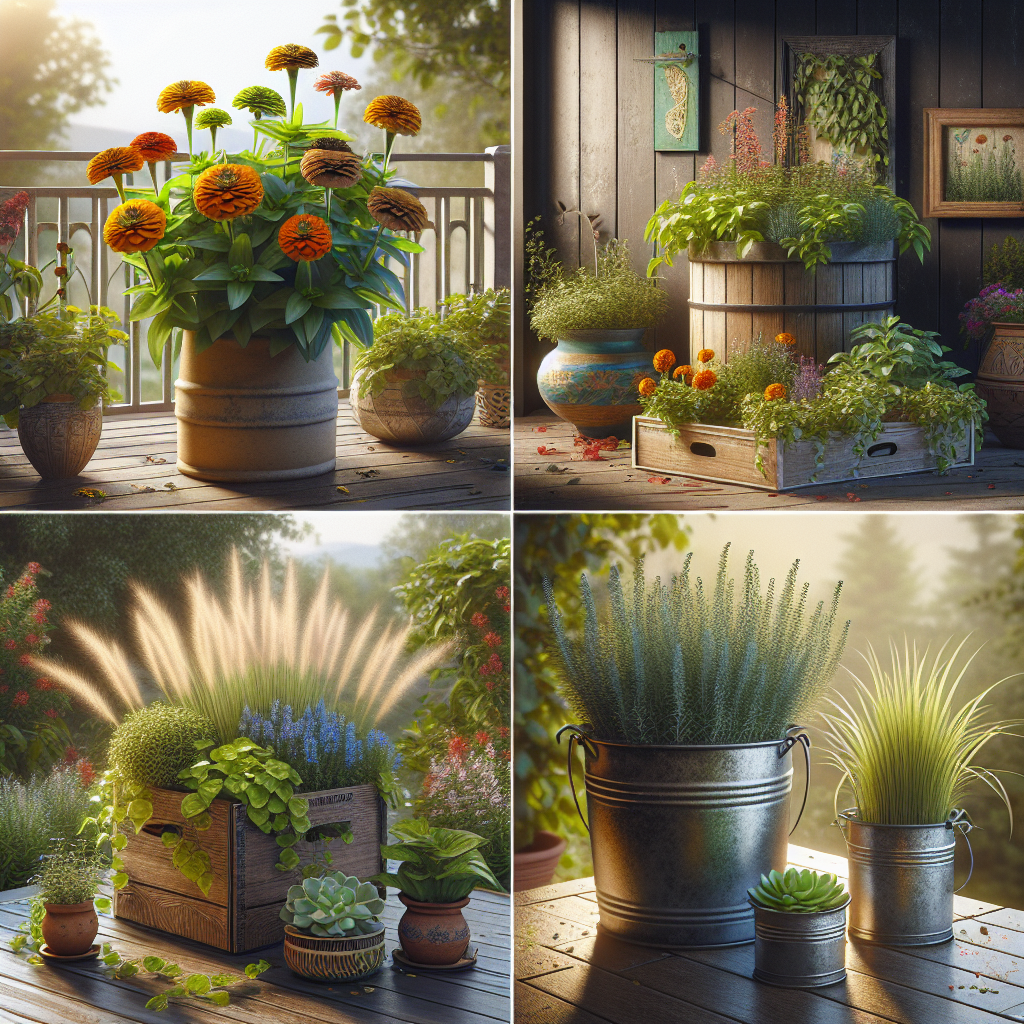Container Gardening Ideas for Beginners
Container gardening is a fun and rewarding way to bring greenery and life into your outdoor space, even if you don’t have a traditional garden. It’s a great option for those who live in apartments, condos, or homes with limited outdoor space. Plus, container gardening allows you to easily move your plants around to find the perfect spot for them to thrive.
If you’re new to container gardening, the prospect of starting may seem daunting. However, with some basic knowledge and a little creativity, you can create a beautiful container garden that will bring joy and tranquility to your home. In this article, we’ll explore some container gardening ideas for beginners that will help you get started on your journey to becoming a successful container gardener.
Choosing the Right Containers
The first step in creating a successful container garden is choosing the right containers. When selecting containers for your plants, consider both aesthetics and functionality. Choose containers that are large enough to accommodate the root systems of the plants you want to grow and have drainage holes at the bottom to prevent waterlogging.
There are many different types of containers available for container gardening, including plastic pots, ceramic pots, metal containers, hanging baskets, and even repurposed items like old buckets or crates. Get creative with your container choices and don’t be afraid to mix and match different styles and sizes to create an interesting visual display.
Selecting Plants
When choosing plants for your container garden, consider factors such as sunlight exposure, watering needs, and growth habits. For beginners, it’s best to start with easy-to-grow plants that are low maintenance and forgiving of mistakes. Some beginner-friendly plants for container gardening include:
– Herbs: Herbs like basil, parsley, mint, and rosemary are easy to grow in containers and can be used in cooking.
– Succulents: Succulents are drought-tolerant plants that come in a variety of shapes and colors.
– Annual flowers: Annual flowers like petunias, marigolds, zinnias, and impatiens provide long-lasting blooms throughout the growing season.
– Vegetables: Vegetables like tomatoes, peppers, lettuce, and radishes can be grown in containers with proper care.
– Houseplants: Many houseplants thrive in containers outdoors during the warmer months before being brought indoors during the winter.
When planning your container garden design, consider mixing different types of plants with varying heights or textures for visual interest. You can also create themed containers based on color schemes or plant families for a cohesive look.
Designing Your Container Garden
Once you’ve chosen your containers and selected your plants, it’s time to start designing your container garden. Consider factors such as plant placement, color coordination,
and vertical interest when arranging your containers. Here are some design ideas for beginner container gardeners:
Vertical Gardens: Utilize vertical space by creating hanging gardens or stacking multiple containers on shelves or tables.
Color Schemes: Choose plant combinations that complement each other in terms of color tones or contrasts.
Focal Points: Create focal points by placing larger or taller plants in the center of groupings of smaller plants.
Seasonal Displays: Create seasonal displays by switching out annual flowers or adding seasonal decorations like pumpkins or gourds.
Water Features: Incorporate water features like fountains or birdbaths into your container garden design for added visual interest.
Caring for Your Container Garden
Proper care is essential for maintaining a healthy and thriving container garden. Here are some tips for caring for your plants:
Watering: Check soil moisture regularly and water when needed – usually once per day during hot weather.
Fertilizing: Feed your plants with a balanced liquid fertilizer every two weeks during the growing season.
Pruning/Deadheading: Remove dead leaves or spent flowers regularly to encourage new growth.
Pest Control: Monitor for pests like aphids or mealybugs; treat infestations promptly with insecticidal soap.
Winter Care: Bring tender plants indoors before frost hits; store empty containers in a protected location.
By following these tips and ideas for beginner container gardening enthusiasts will be well on their way to creating beautiful outdoor spaces filled with lush greenery all year round. Container gardening is a flexible hobby that can be adapted to suit any taste or lifestyle – so don’t be afraid to get creative! With patience,
dedication – as well as trial-and-error – anyone can become an accomplished gardener no matter their experience level! Happy gardening!
Conclusion
Container gardening is an enjoyable hobby that allows people with limited outdoor space to enjoy growing their own plants without needing space consuming traditional gardens! By selecting suitable containers,
choosing appropriate plant varieties – setting up attractive designs –and providing proper care anyone can create thriving – beautiful –container gardens! Remember– practice makes perfect– so don’t get discouraged if things don’t go perfectly right away! Happy Gardening!














